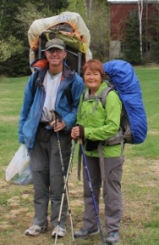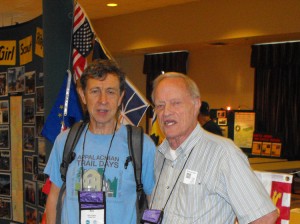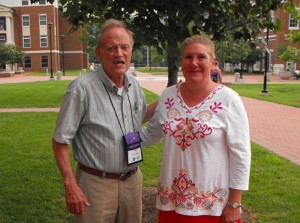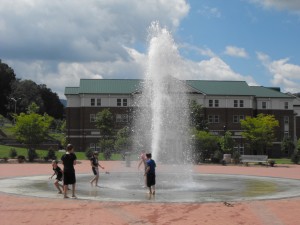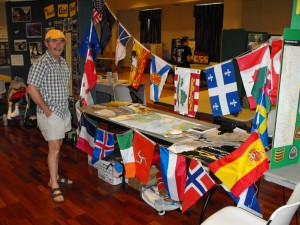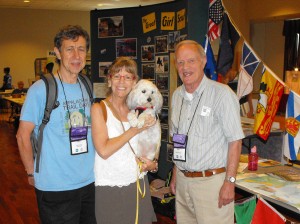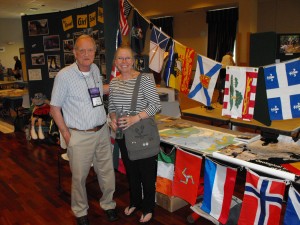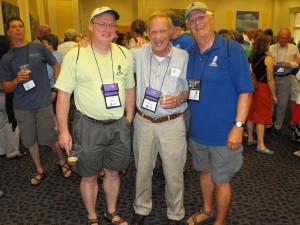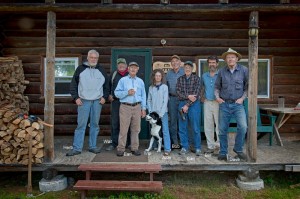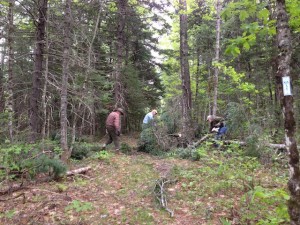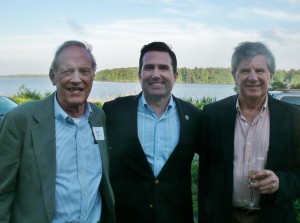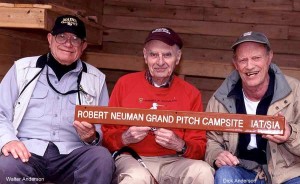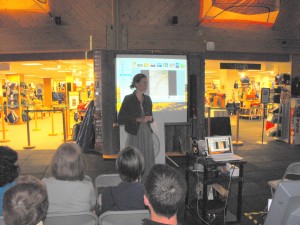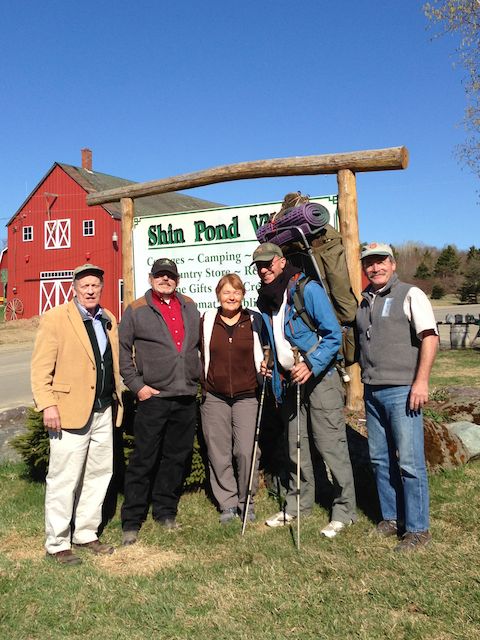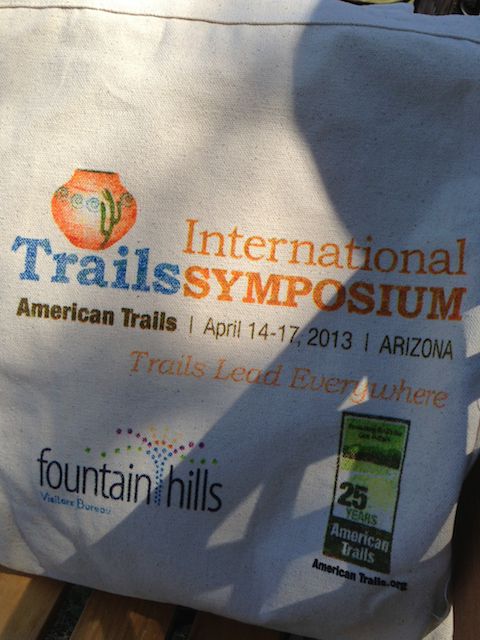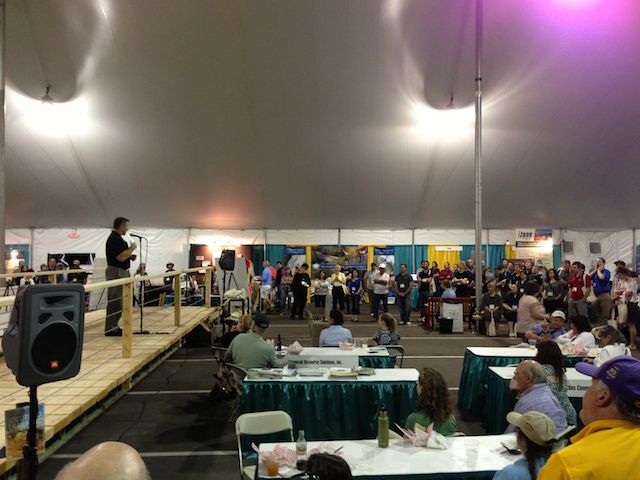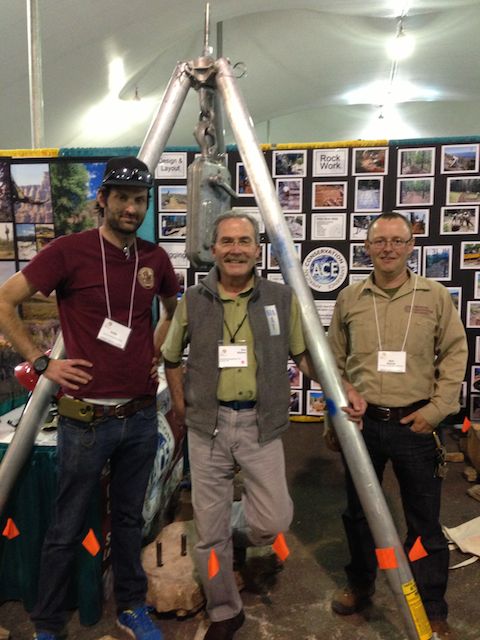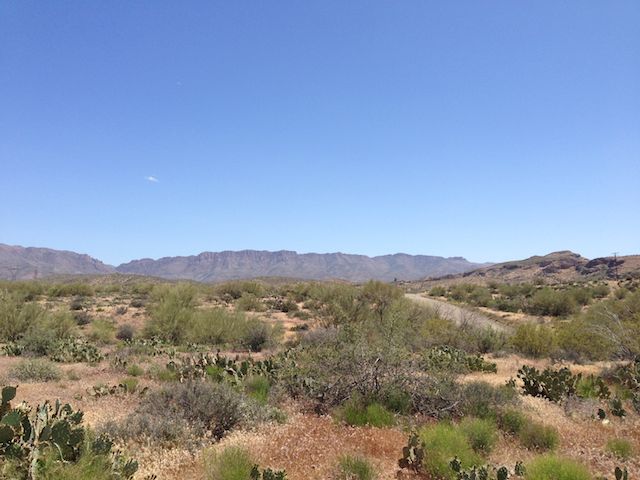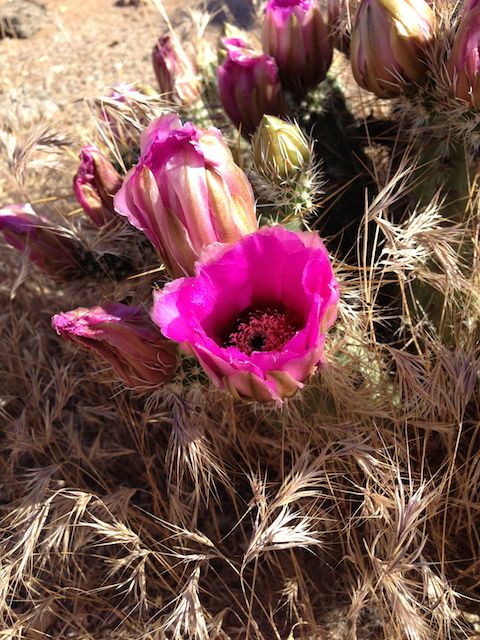Baxter State Park boundary to Deasey Mt. trail maintenance, and routine maintenance work at Katahdin Brook and Wassataquoik campsites
June 26-27, 2013
Day #1
Dave Rand proposed a ‘punch’ list of work for the crew at the annual meeting, and everything on Dave’s list was completed by a crew of seven: Cheryl and Kirk St. Peter, Earl Raymond, Julia Daly, Ruby Rockwell, Kelsey O’Connor and Don Hudson.
Don and Earl drove up from Portland area with Walter’s supply of Poland Spring water, as well as food and gear for the work trip. Julia and two students, Ruby and Kelsey, and Cheryl and Kirk arrived at the Irving Station at Sherman Exit at about 10:00 AM. Cheryl and Kirk had their ATV , chainsaw, clippers and other gear.\

The group drove 22 miles into Wassataquoik lean-to on the new access road just opened by EPI. Earl had a map and led the way with Don’s Volvo doing some serious scraping along on the new ½ mile section built to connect existing tracks.
The lean-to was in very good condition and Kirk quickly removed the fir tree that had fallen on it last winter, causing no damage.
After a quick lunch everyone went to the Wassataquoik Stream crossing to reinstall the rope. The rope had shrunk a bit over the winter and the reserve line wound around the tree on the south side of the river had to used to complete the job. Don scythed the grassy area along the river while the rest of the crew cut brushed the trail to the turn on the Keep Path to Deasey Mt. Here a new marker post was installed.
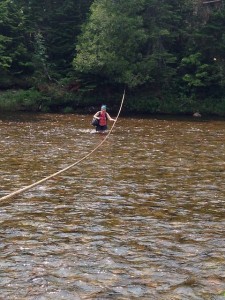
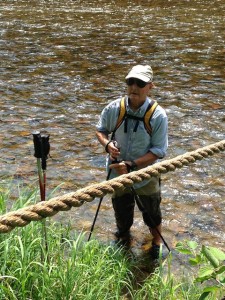
Don cooked a quick stroganoff for dinner, during showers and a downpour, and Cheryl provided strawberry shortcake. The day ended with a smoky campfire to match the multitudes of mosquitoes.
Day #2
Kirk, Julia, Ruby, and Kelsey O’Connor returned to the post set yesterday and worked all day on the trail to Deasey Mountain. The first group headed directly to the summit in order to work downhill. Don and Cheryl first cut a 100 yard detour around the new beaver pond just north of the lean-to on the Orin Falls Road, which Earl had scouted before breakfast. Don and Cheryl then headed across the river to work up the mountain towards the group coming down.
While the first two crews were working on the Deasey Mountain Trail, Earl headed to the Katahdin Brook lean-to. He hiked back up Gardner Road to check the post and blazes and found them in very good condition. The post and stones at old mile zero on the Gardner Road have been removed, now that a new trail is being built in the Park to connect Katahdin Lake with the new IAT campsite on Katahdin Brook. Earl returned to Wassataquoik Stream and hiked up the trail to meet the crew at the cut off to the Warden Cabin.
There were numerous blow downs along the trail, and it was hot and muggy day with ample mosquitoes. Hemlock and Pine are growing in thick along a couple of stretches of the Keep Path and another old road, and they will need trimming every year. The day was so hot that the girls went swimming when they got back to the crossing. Everyone pitched in with the last task of the day – to remove the slack from the safety line across the river. Julia, Ruby and Kelsey then left in the late afternoon to reach Farmington in time for a prior commitment.

During supper Mark Leathers visited with Lucas St. Clair, Tom Chase, the new Lunksoos Camps managers, Susan and Mark Adams, and several others. It was quite a surprise, and Don almost burned the chicken in all the commotion.
Day #3
The group broke camp after to breakfast and headed to Katahdin Brook campsite to build a fire ring.
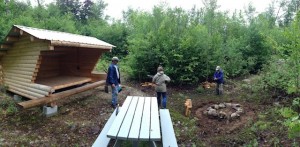
Mark Learthers and EPI has placed a 30” wide steel bridge across Katahdin Stream, informally named “Walter’s Bridge” for easy access to the trail and campsite. The crew bumped in to Mark, Susan and Mark Adams, and Cathy Johnson at the top of the Gardiner Road as they were leaving. EPI is planning for greater public access to their lands now that a new loop road has been created from Whetstone Bridge outside Sherman Station.
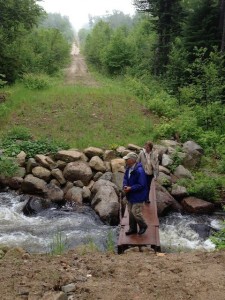
The days were hot and muggy, the mosquitoes fierce, but all tasks on Dave’s list were accomplished. The new access road is in great shape. A number of moose were spotted. Earl claims that the food was good, but that the entertainment and the German singing was not up to par. A special thanks goes out to Julia Daly and her University of Maine at Farmington students Ruby Rockwell and Kelsey O’Connor for providing youth and energy.

